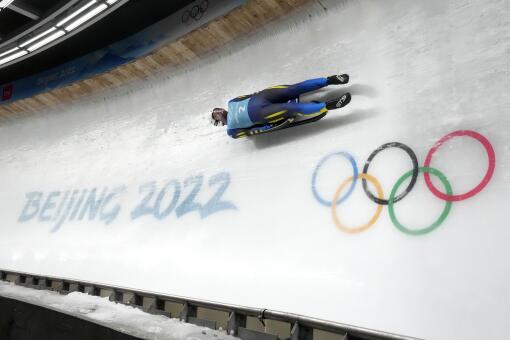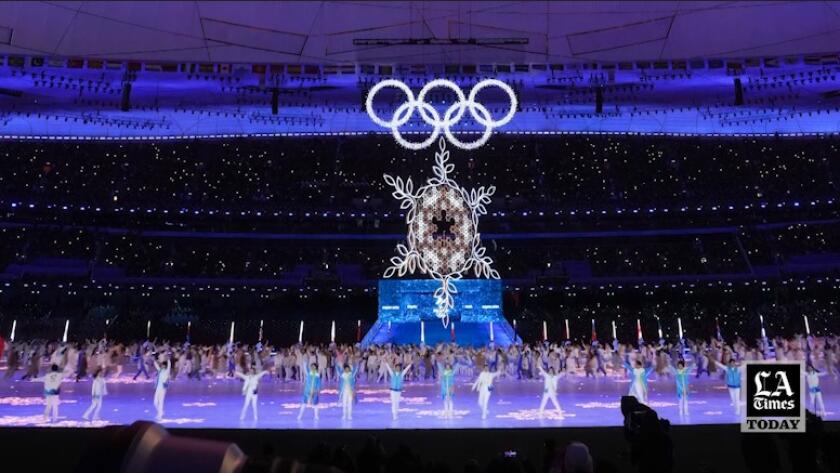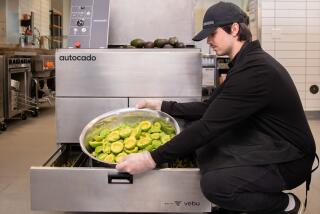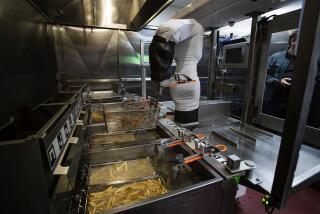China strives to flex its tech innovations to worldwide audience at Olympics

- Share via
BEIJING — An automated basket tips frozen wonton into boiling water. Within minutes, the dough-wrapped bits of pork are cooked, deposited into a black plastic bowl and transported onto a conveyer belt, untouched by human hands. Pink lights flash as your lunch order arrives at the counter.
The robotic café inside the media center at the Beijing Olympics has received worldwide coverage the last few weeks. It makes for good television and eye-catching social media posts.
There are cyber-boilers and fryers and even a one-armed bartender. Unmanned servers glide across overhead tracks, lowering meals by cable, like Tom Cruise dangling from the ceiling in “Mission Impossible.”
Beneath all this mechanical flash, there might be some important political context.
China’s Eileen Gu continued to soar at the Winter Olympics by winning gold in the women’s freestyle ski halfpipe Friday.
Organizers say their modernistic food preparation is meant to limit human contact and thus inhibit the spread of the coronavirus. At the same time, China has clearly made an effort to place gadgetry in front of journalists at every turn.
Robots with flashing blue lights cruise hallways and infrared scanners display the ghostly, glowing shapes of everyone walking past. Sleep cabins, controlled by cell phone app, offer a chance to nap during long workdays. Clayton Dube, director of the U.S.-China Institute at USC, suspects the host country is trying to portray itself as “the highest of high-tech.”
“China wants to convey that it is not just a manufacturing superpower, the so-called workshop of the world,” Dube said. “They also want to be a center of innovation.”
These feats of engineering have the occasional downside. In the cafeteria, the wait for space-age wonton runs a half an hour or longer. Two guys in aprons and masks at the next counter can cook a bowl of noodles with stewed pork in less than five minutes.
———
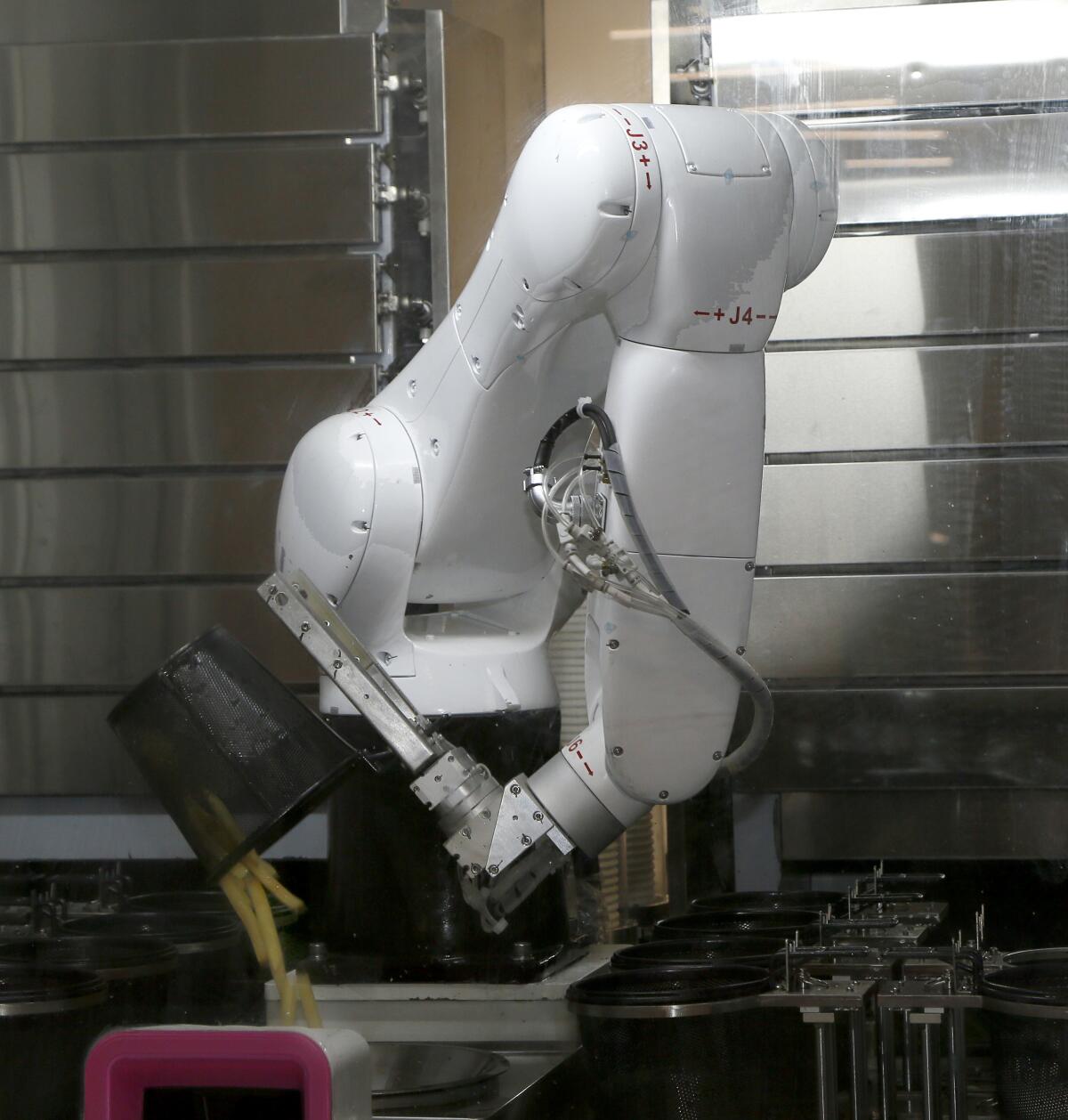
During his speech at the opening ceremony, the president of the local organizing committee spoke about the challenge of staging an international sports competition during a pandemic.
“As we continue to live under the impact of COVID-19,” Cai Qi told a stadium whose capacity was significantly limited by restrictions, “the safety and health of all Games participants remain our top priority.”
Some countermeasures in Beijing — masks, social distancing, hand washing — are decidedly low-tech.
But the use of robotics within the “closed-loop system” has been pervasive. Blockish and white, standing about chest-high, automatons patrol venues and media hotels. They possess the ability to take elevators by themselves.
According to a government website, various types of robots can spout disinfectant mist into the air, shine germ-killing ultraviolet light and, in some cases, detect people who are not wearing masks and ask them to put one on. The Chinese state council says that some of its unmanned workers spray atomized mist on the ground, disinfecting as much as 387 square-feet a minute.
Zachary Binney, an epidemiologist at Oxford College of Emory University in Georgia, notes that COVID spreads primarily through the air, making masks, HEPA filters and ventilation systems the most-effective countermeasures.
“Disinfecting surfaces for COVID is largely theater, though of course cleaner surfaces in general are better and this may affect other germs,” Binney said in an email.
When it comes to addressing the coronavirus, Chinese officials have reason for wanting to appear as diligent as possible to the rest of the world, given that the spread of the virus originated in their country.
Following a wave of nationwide restrictions in preparation for the Games, including snap lockdowns of businesses, office buildings and entire communities, the Communist Party might also want to deliver a message to its own population.
“What if some kind of outbreak is sparked internally by the Olympics?” asks Susan Brownell, a University of Missouri-St. Louis professor who specializes in Chinese sports culture. “The party and its leadership are extremely sensitive to public opinion.”
Officials have placed infrared stations throughout the closed loop, showing not only images but body temperature. A health worker pulls aside anyone who registers over 99.1 degrees and rechecks them using a standard thermometer.
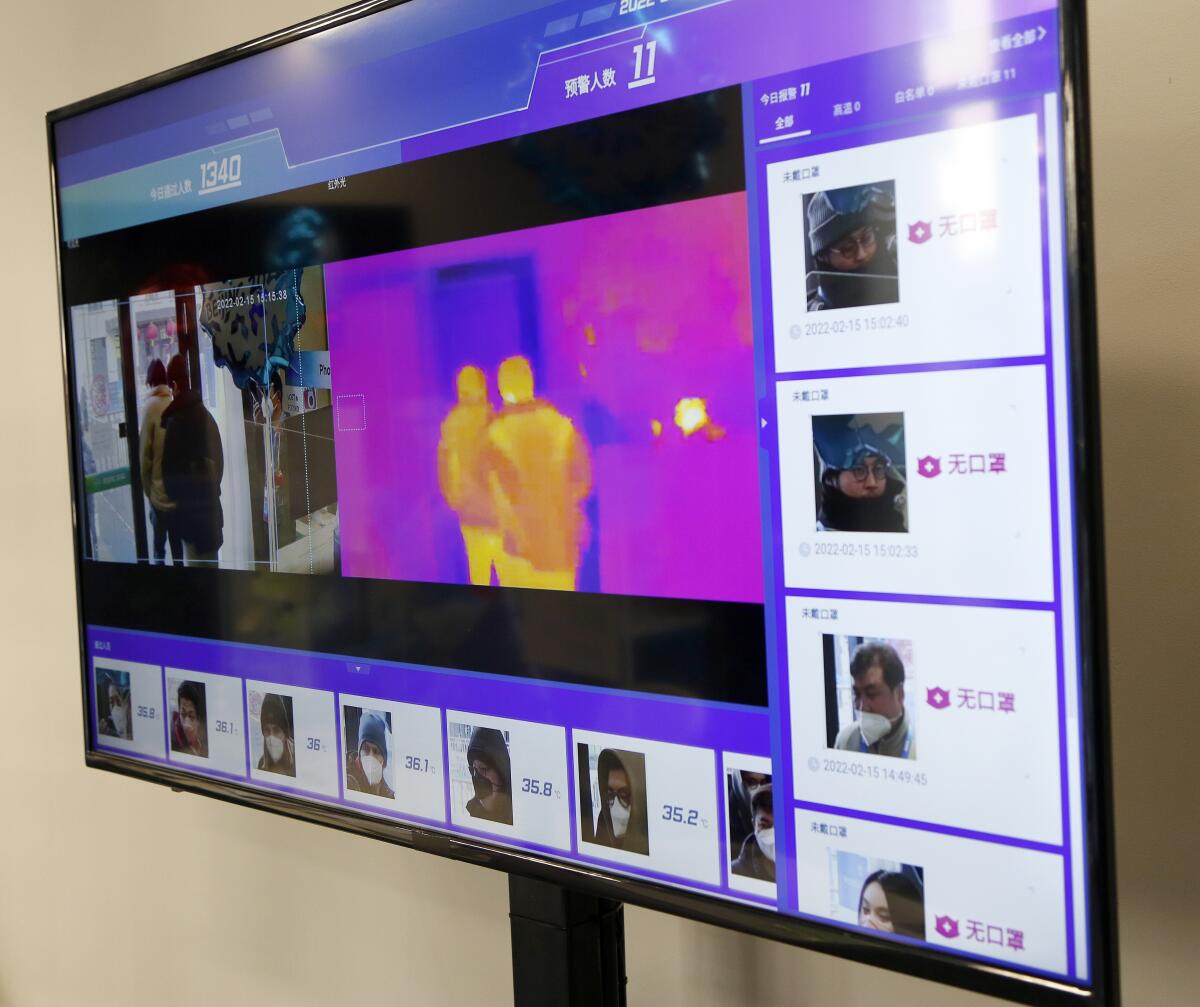
There is good science behind these stations, but they are also photogenic with bright, purplish visuals displayed on big-screen television monitors.
Oddly, the Olympic health monitoring system relies to some degree on self-reporting. In addition to showing up for daily throat swabs, everyone at the Games is required to take their own temperature and enter the result into a cell phone app.
On a recent bus trip, a group of reporters joked about the temperatures they would concoct and type into their phones that morning.
———
Not all of the technology at the Beijing Games is pandemic-related.
More than a dozen futuristic “Sleep rest cabins” line a wide hallway at the media center, where hundreds of journalists work from morning until late at night.
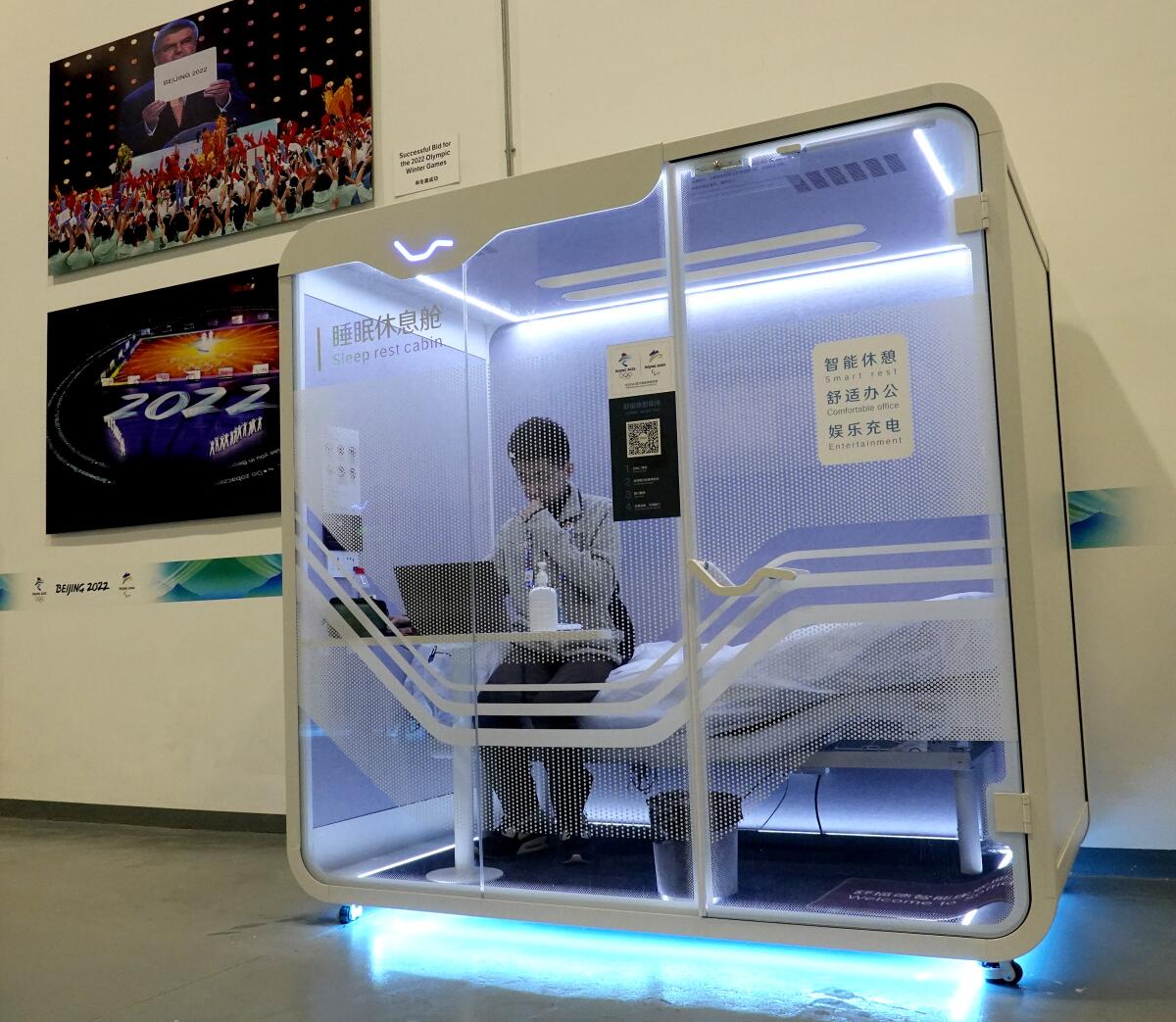
Anyone in need of a power nap can scan a QR code to unlock the door, stepping inside a compact space with a smart bed that can be adjusted — head up, feet up — by remote control. There are massage settings and disposable sheets in a bin on the wall.
As with other innovations here, this rooms come with a caveat: Their front walls are entirely glass. That means people walking down the hall can peer inside, which they often do. It means they can stop and snap photographs. They do that, too.
Again, the cabins have been a favorite topic for international media in search of quirky news items beyond the usual sports.
Watching the Olympics from afar, Dube echoes the notion that Chinese officials might be trying to reach their own. State-run television has shown not only the same robots seen worldwide, he says, but also “video of foreigners taking video” of the cafeteria.
“By putting these things on display,” he said, “the government is proving, ‘Look, we are using technology to make the Olympics run better.’ ”
If this technology is at least partly for show, the Winter Games would not be unique. Dube talks about what he has witnessed around Los Angeles the past few weeks.
“It isn’t just China’s leaders eager to leave visitors with a good impression,” he said. “With the Super Bowl … crews have been picking up trash and painting over graffiti along the 405.”
Trying to make a good impression, the professor suggests, might be a universal instinct.
- Share via
Watch L.A. Times Today at 7 p.m. on Spectrum News 1 on Channel 1 or live stream on the Spectrum News App. Palos Verdes Peninsula and Orange County viewers can watch on Cox Systems on channel 99.
More to Read
Go beyond the scoreboard
Get the latest on L.A.'s teams in the daily Sports Report newsletter.
You may occasionally receive promotional content from the Los Angeles Times.


